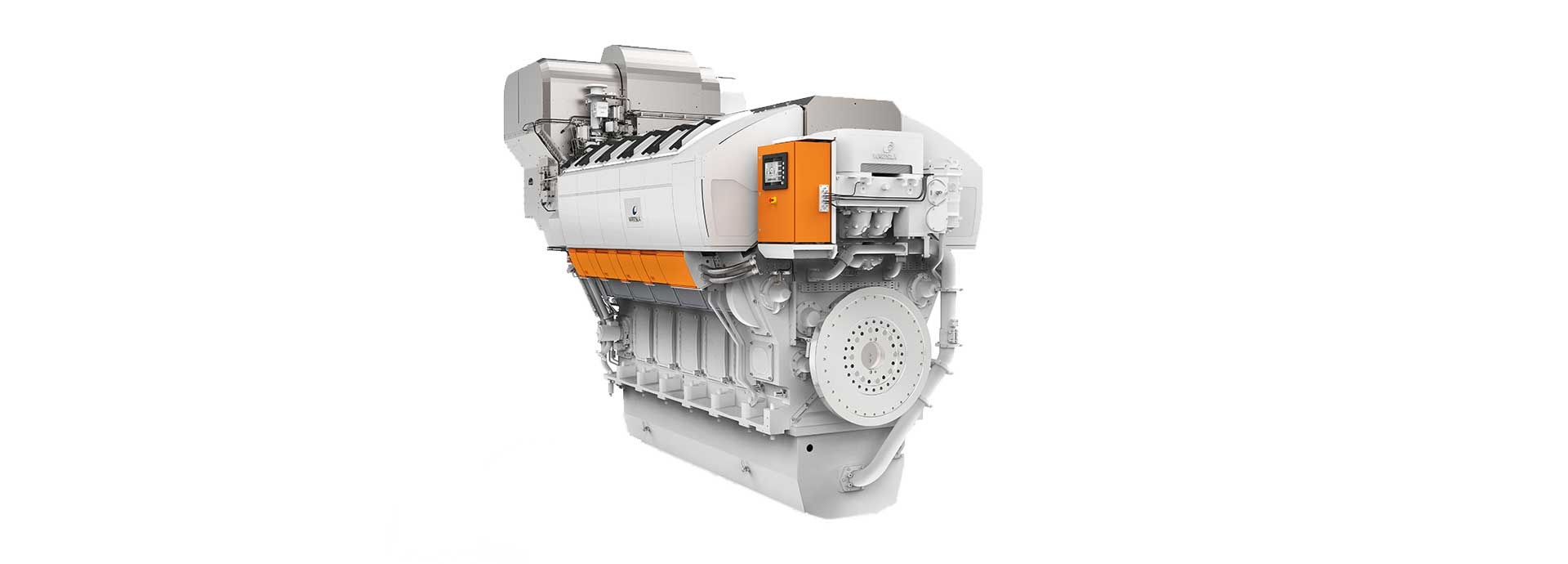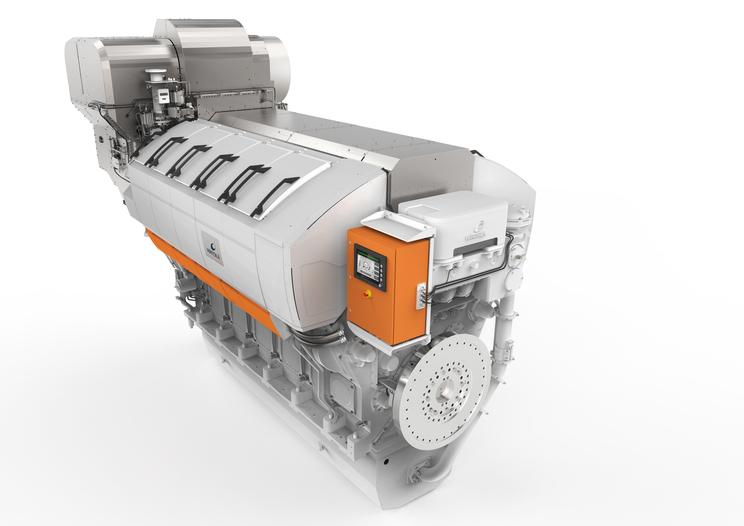

Japan has one of the most advanced ferry fleets in the world, thanks in part to Wärtsilä solutions that push the boundaries of energy efficiency and environment-friendliness.
About 430 of Japan’s islands are permanently inhabited. While some are connected by bridges and tunnels, ferries remain the most efficient way to travel between many of them. Japan has invested heavily in the ferry industry, making it one of the most advanced and efficient in the world, says Keisuke Yasutake, Sales Manager, Marine Business at Wärtsilä Japan.
“Ferries carry both passengers and vehicles,” says Yasutake. “Ferries on long-distance routes –over 300 km – provide facilities and services comparable to high-end hotels.”
More efficient transport by sea
The country began studying the benefits of marine transportation more closely after the 2011 earthquake and tsunami devastated coastal infrastructure. Additionally, a lack of truck drivers has put limits on the growth of ground transportation, while increasing concern about the environment has also favoured growth in ferry transport.
“There is an active movement to change transportation to reduce the environmental impact,” Yasutake explains. “Various transportation agencies aim to reduce CO2 emissions by shifting from land transport to sea transport and railroads. CO2emissions can be reduced by 75% by using marine transportation instead of trucks.”
In addition to regulations on CO2 emissions, Japanese ferry owners and operators also need to meet strict requirements on nitrogen and sulphur oxide emissions. Japanese ferry owners are seeking solutions to meet their environmental responsibilities with safer operations, longer lifespan, higher efficiency, smokeless operation, and lower operating and investment costs, which is why many are turning to Wärtsilä, according to Yasutake.
“We can offer high-efficiency propulsion package solutions with the Wärtsilä 31 engine and scrubber, or the Wärtsilä 31DF dual fuel engine and LNGPac for LNG fuel systems with integrated automation systems in order to comply
with emission regulations,” Yasutake says. “We can also propose optimised propulsion and power management systems. To ensure safe operations, we can provide tailor-made service agreements for customers.”

The Wärtsilä 31 engine
Wärtsilä also offers several solutions for upgrading existing vessels to meet environmental compliance guidelines. For instance, while the Wärtsilä HY solution integrates hybrid solutions into existing engines allowing the engines
to run on optimal load while absorbing excess energy into batteries, the EnergoProFin propeller cap optimises the operation of existing vessels. Its fins rotate with the propeller, reducing energy losses and increasing propulsion. With the EnergoProFin,
operators can achieve an average of 2% fuel savings annually. Wärtsilä also offers solutions targeting specific international regulations. The Safety of Life at Sea, or SOLAS, treaty lists minimum safety standards for merchant ships. Wärtsilä
SOLAS upgrades ensure that requirements are met, and ship personnel are kept safe. In addition, the Wärtsilä SOx scrubber retrofit offers shippers an efficient, cost-effective way to bring ships into compliance with IMO 2020 regulations.
Exhaust scrubbers for cleaner emissions
Two major Japanese ferry operators chose Wärtsilä to provide solutions for new ships they are building. Hankyu Ferry wanted the most efficient engine and exhaust cleaning system available and chose Wärtsilä to supply them for two new ferries. In early 2019, Shin Nihonkai Ferry also picked Wärtsilä to provide engines and scrubbers for their two new ships.
Shin Nihonkai Ferry chose Wärtsilä’s Open Loop Scrubber System to meet all existing and future SOx emission regulations and to provide flexibility and reliability. Hankyu Ferry chose the Wärtsilä Hybrid Scrubber System, which has the flexibility to operate in both open and closed loops so that scrubber wash water isn’t discharged in Seto Inland Sea. Both scrubber systems use seawater to remove SOx from exhaust gases.
“With the I-SOx (Inline) scrubbers which have a compact footprint, they will be compliant for the 0.5% cap on sulphur emissions and the open loop scrubber system saves installation space without any reduction of accommodation space,” says
Yasutake.

The launching Ceremony for Hankyu Ferry’s new vessel, named “Settsu”, the first ferry in Japan with the Wärtsilä 31 engine
6% energy saving
Wärtsilä engines have also been popular in the Japanese ferry market for the same reasons — efficiency. The Wärtsilä 31 engine has been recognised by Guinness World Records as being the world’s most efficient 4-stroke diesel engine. It is also available in dual fuel and pure gas versions.
“Fuel efficiency is extremely important for Japanese ferry operators,” says Rasmus Teir, Product Manager at Wärtsilä. “With the Wärtsilä 31, we will see at least a 6% energy savings when compared with the second, best engine alternative in the market.”
The Wärtsilä 31 achieves high fuel efficiency through a combination of innovative technologies, including common rail fuel injection, hydraulic valve control, a 2-stage turbocharger, and the integrated Wärtsilä UNIC engine control system. High efficiency not only lowers fuel costs and boost profits, it also directly affects emissions.
“Greenhouse gas emissions are linked to fuel consumption. You can lower emissions by lowering fuel usage,” Teir explains. “Additionally, with the Wärtsilä 31’s patented twin-needle fuel injector featuring a dedicated
low load injection nozzle we have lower soot and particle emissions. This unique technology offers the best possible emission performance across the load range.”
Reliability, long life and fewer vibrations
“Shin Nihonkai Ferry wanted higher efficiency, longer lifetime and optimised maintenance planning in order to ensure safe operations,” says Hisao Shimizu, Deputy General Manager, Shin Nihonkai Ferry Co., Ltd.
“For this particular project, the Hankyu Ferry wanted the most efficient engine and exhaust cleaning system possible with state-of-the-art technology,” says Takahiro Yamaguchi, Director, Hankyu Ferry Co., Ltd. “The Wärtsilä 31 was the obvious choice for meeting the engine requirement, while the Wärtsilä hybrid scrubber is an environmentally sustainable solution that is very relevant as we approach the upcoming 0.5% limit.”
High efficiency is one of the most appealing advantages of the Wärtsilä 31, but the engine also boasts a number of other benefits for Japanese ferries. It is highly reliable, has a long time between scheduled overhauls and has reduced noise and vibrations.
“Japan has a big fleet of ferries and they are in a continuous renewal process driven by demands for higher efficiency and lower emissions. In the future we will see even cleaner solutions, such as engines which use LNG as fuel,” Teir says. “We’re very happy that we can offer the solutions that the ferry owners need.”
Recent Wärtsilä solutions in Japanese ferries | ||
Owner | Hankyu Ferry., Ltd. | Shin Nihonkai Ferry., Ltd. |
Yard | Mitsubishi Shipbuilding Co., Ltd. | Mitsubishi Shipbuilding Co., Ltd. |
Wärtsilä solutions | 2x 14V31 2x SH116-PD67 2x Hybrid Inline Scrubber System | 4x 14V31 2x double input gear 7x I-SOx open loop scrubbers |
Notes | - The first ferry in Japan with four Wärtsilä 31s - 16V38B for Yamato, Tsukushi - 12V38C for Izumi, Hibiki | - 12V46C for Akashia, Hamanasu - 12V38C for Suisen, Suzuran, - 16V38C for Lavender, Azalea - 8L20(AE) for Yuukari, Lilac |
Did you like this? Subscribe to Insights updates!
Once every six weeks, you will get the top picks – the latest and the greatest pieces – from this Insights channel by email.